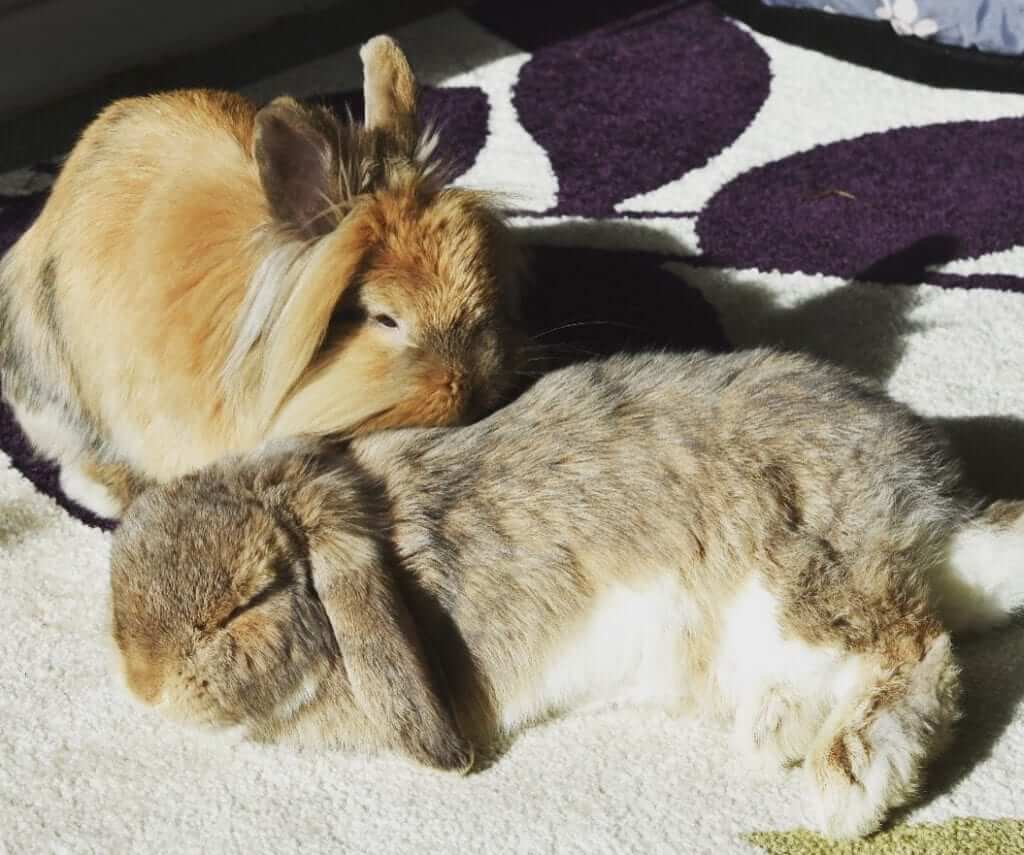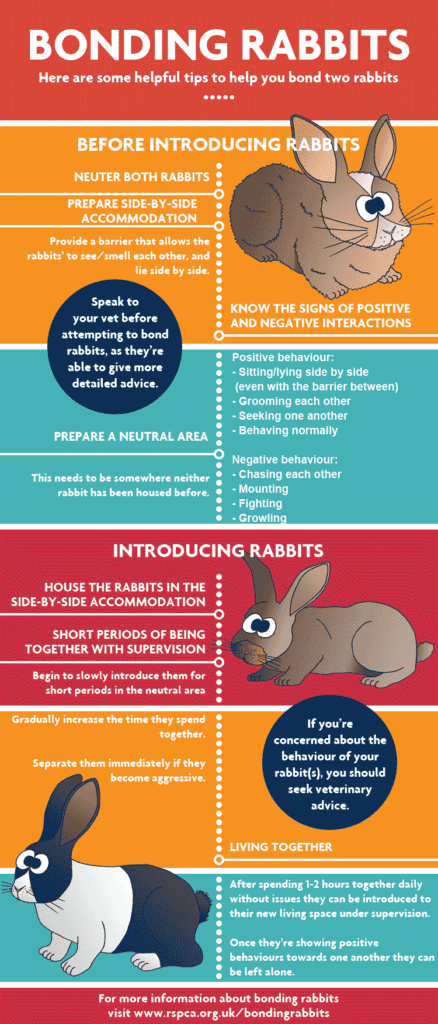On this blog I am going to look at why it is important to keep rabbits in pairs; in the wild rabbits live in big groups and are very sociable animals, once you have seen rabbits in a bonded pair you will never want to keep one on its’ own.
Rabbits will tolerate company from other animals, and enjoy living with their humans but it does not replace living with one of their own kind. Rabbits have unique ways of communicating (for example a good THUMP!) and understand each other’s body language and signals. They eat, play and groom together and look out for each other.

The best pairing you can get is a neutered male and neutered female, this prevents unwanted litters and means two more relaxed, happier bunnies. Any male and female bunnies can live together from birth; however,
introducing bunnies later may require “bonding.”
In the wild rabbits are very territorial around rabbits they
don’t know and have very strict hierarchies in their “warrens.” Sometimes this can lead to confrontation when they first meet, however you can usually get help or advice from rescues about bonding (some may do it for you another reason to adopt not shop!)
You can also find advice on the Rabbit Welfare Association and the RSPCA website about bonding and why keeping rabbits in pairs is important.
Some basic approaches to bonding are:

All that being said, you may wonder why pet shops do not offer a discount for buying 2 rabbits already co-habiting as opposed to just one. And why they do not offer advice on bonding and the importance of keeping rabbits in pairs, as well as them being neutered for their physical and mental health. This is something we want to raise awareness on so that members of the public (and paying customers at large pet stores) can start to challenge this and ask these questions to improve the overall education on the well-being of rabbits.
© 2023 Pets Playstore. All Rights Reserved.